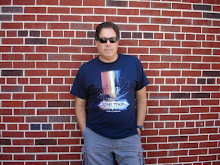Sunday, March 30, 2014
MOST DANGEROUS GAME, THE
(September 1932, U.S.)
Last night, when watching the 1932 film version of Richard Connell's THE MOST DANERGEROUS GAME, I reaffirmed what a true black and white, scary movie watching experience really is. Picture it - it's late at night, the house is dark and quiet because the rest of your family has gone to bed, it's raining outside and you're all alone watching a truly chilling motion picture. Those who grew up in the 1970s and early 1980s will equate such a viewing experience with late-night movie broadcasts on TV such as "Fright Night" or "Chiller Theater". This, I might add, is also clear evidence of how much older I've gotten. Twenty years ago, I would have been doing some very different things at 11:30 on a Saturday night! But that's another story...
If you ever saw a couple of films in the 1990s called GAME OF DEATH (1993) and SURVIVING THE GAME (1994), or if you remember a particular episode of GILLIGAN'S ISLAND in which Gilligan was being hunted by another man for sport, then the story of THE MOST DANGEROUS GAME will ring true. The original story has been covered numerous times, but like all adaptations, the first is usually the best. This first version with Joel McCrea as Bob Rainsford and Leslie Banks as Zaroff is a tremendous example of how to fit a whole lot more into less. At a running time of merely 63 minutes, the film packs more thrills and excitement than most Hollywood films today manage to squeeze in two hours or more with their damn computer generated images! Starting out simply enough, the story begins with the shipwrecking of the only survivor Bob Rainsford on a small an lush island inhabited only by mute natives and the rather diabolical and expatriate Russian Count Zaroff. Both men are obsessive hunting enthusiasts. Zaroff's enthusiasm, however, goes beyond the traditional normal means. Besides the natives, Zaroff's castle is also populated by several guests, including brother and sister played by KING KONG's Fay Wray and Robert Armstrong. There were two other guests, but they seem to have mysteriously disappeared (???). We learn much of Zaroff's love of hunting through his own stories, including the inevitable boredom he felt which eventually lead him to the lust for hunting man himself, which he refers to as the "most dangerous game". In a rather deluded manner, Zaroff expects Rainsford to view the matter like himself and is gravely disappointed when Bob calls him a madman. As a result, Bob has now become Zaroff's new target. With Eve (Fay Wray) in tow, if they can survive from midnight until dawn, they win the game and will be allowed to leave the island. The game begins and it's hunter versus human prey. Cliche and decency dictate who will come out on top in the end, but one can help but feel the true savagery of what's taking place here. Animal has hunted animal for food. Man has hunted animal for food and for sport. Animal has hunted man, more often than not, for self-defense of their own territory. Man can only be accused of hunting man for the sport of his sick mind and lustful urges. In any situation of hunter verses prey, you have to figure that one may just be a little smarter (or luckier) than the other. If the hunter and prey are both man, then the game can go either way. In the case of film literature, one can only presume the basic elements of good verses evil. In the movies, good is often meant to triumph.
As an actor, I don't know too much about Leslie Banks, except that he does possess some rather sinister-looking physical qualities that are present in this film, as well as in Alfred Hitchcock's JAMAICA INN (1939). There's one particular black and white image from this film that's most frightening to look at, especially when it's late at night in the dark. Take a look...
(do I lie??)
I briefly mentioned KING KONG (1933) a moment ago, but would now like to expand on its relevance here. Not to its story, but to filming and casting. Those who are true fans of the great monster movie will easily notice many cross-overs from this film. In total, there are four stars (including Wray and Armstrong), two producers and one director (Ernest B. Schoedsack and Merian C. Cooper), and some recognizable movie sets from this film, including the giant log that bridges the ravine. It's rather curious to watch Fay Wray as a brunette in this film when the entire world has always associated her as the screaming blonde known as Ann Darrow. Don't worry, though - she screams in this film, too.
Favorite line or dialogue:
Doc: "I was thinking of the inconsistency of civilization. The beast of the jungle, killing just for his existence, is called savage. The man, killing just for sport, is called civilized. It's a bit inconsistent, isn't it?"
Bob Rainsford: "Now just a minute. What makes you think it isn't just as much sport for the animal as it is for the man? Now take that fellow, for instance. There never was a time when he couldn't have gotten away, but he didn't want to. He got interested in hunting me. He didn't hate me for stalking him anymore than I hated him for trying to charge me. As a matter of fact, we admired each other."
Doc: "Perhaps, but would you change places with the tiger?"
Bob: "Well, not now."
Subscribe to:
Post Comments (Atom)




No comments:
Post a Comment